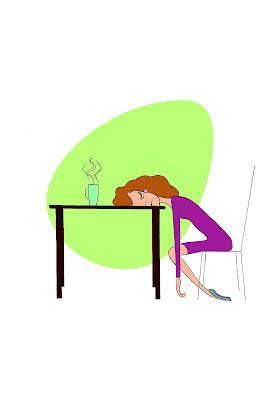Yoga for Diabetes
Diabetes is broadly classified into two types. Type-1
and Type-2.
Type 1 is known as Insulin Dependent Diabetes Mellitus (IDDM)
or Juvenile Diabetes. It develops before the age of 40 and is often seen in
children. It is an autoimmune condition in which the body’s defense mechanism
attacks and destroys beta cells of pancreas resulting in decreased production
of endogenous Insulin. Factors including genetic predisposition and some
viruses may contribute to type 1 Diabetes.
Usually patients with type-1 Diabetes require insulin injection.
Type 2 is also known as Non-Insulin Dependent Diabetes Mellitus
(NIDDM). Usually it affects individuals older than 40 years. Because of obesity
and inactivity in children, type-2 Diabetes Mellitus is now occurring at
younger ages. In this condition, beta cells of pancreas produce insulin but it
is not enough or the body is unable to recognize the insulin and use it
properly. Insulin resistance is a condition in which the cells of the body
become resistant to the effects of Insulin. The level of glucose in the bloodstream builds up gradually due to insulin resistance along with varying levels
of insulin secretory defect. Insulin resistance may be a part of metabolic
syndrome, obesity, stress etc.
Research has shown that emotional stress can cause high blood sugar. During stressful conditions, stress hormones are released particularly Cortisol. It increases the availability of glucose and inhibits the release of insulin. An increased level of blood glucose could also occur during stress due to increased muscle activity as the hormone ‘Glucagon’ gets released by the Alpha cells of Pancreas.
Diabetes
can affect a person’s mood. Changes in blood sugar level can result in rapid
mood changes like confusion, aggression and irritability, behavior changes,
nervousness, tiredness, difficulty in concentration and thinking.
Lifestyle modifications including Yoga, Pranayama, meditation and diet are useful for patients with Type 2 Diabetes. Yoga and Pranayama prescribed for Diabetes focuses on reduction of blood glucose level, weight loss, controlling cholesterol levels and preventing Diabetic complications. Daily practice of Yoga and Pranayama for at least for 30 minutes can increase more oxygenated blood flow in the body and tissue sensitivity, so the body can recognize Insulin easily. Here are some Yogasanas and Pranayama which help in the management of Diabetes.
Yoga
- Sooryanamaskara (Sun salutation)
- Matsyasana (Fish pose)
- Vakrasana (Half spinal twist pose)
- Ushtrasana (Camel pose)
- Dhanurasana (Bow pose)
- Bhujangasana (Cobra pose)
- Ardhamatsyendrasana (Half lord of the fish pose)
- Ardhakatichakrasana (Half waist wheel pose)
- Ardhachakrasana (Half wheel pose)
- Parivrithatrikonasana (Revolved triangle pose)
- Padahasthasana (Hand to foot pose)
- Savasana (Corpse pose)
Pranayama
- Kapalabhati (Frontal brain cleansing breath)
- Bhasthrika (Bellows breath)
- Nadeesudhi pranayama (Alternate nostril breathing)
- Ujjayi (Tranquillizing pranayama)
- Abdominal breathing
These Yogasanas help in proper stretching and relaxation of almost all muscles of the body and regulate metabolic functions. Daily practice of these Yoga poses helps to provide more physical exertion to the body which is necessary in Diabetes. Relaxation between each Asana and deep relaxation after the yoga is also needed. Nadeesudhi pranayama, Kapalabhati etc. are very useful Pranayamas to reduce blood glucose level. As the stress involved is a cause of Diabetes, slow breathing Pranayamas are good to calm down the mind.
Not all Yoga poses are recommended for Diabetes as it maybe contraindicated
in certain conditions. Try practicing recommended Yogasanas and Pranayama daily
with proper guidance.





Comments
Post a Comment